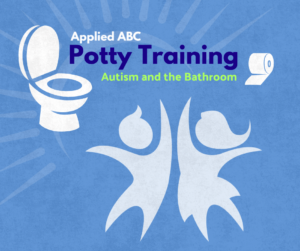
Potty training is a significant milestone in every child’s life, and for children with autism, this process can be uniquely challenging. As a parent, understanding the specific needs of your child and making a plan of action before beginning can make this journey smoother.
Understanding the Challenges
Sensory Sensitivities
Children with autism often have heightened sensory sensitivities, which can make the toilet training process more daunting. The sounds, smells, and sensations associated with using the toilet can be overwhelming.
Communication Challenges
Many children with autism also experience communication difficulties. They may struggle to express their need to use the bathroom or understand instructions related to toilet training.
Routine & Predictability
Children with autism typically thrive on routine and predictability. The transition from diapers to using the toilet can disrupt their sense of security and predictability.
Effective Strategies for Potty Training
Autism & Toilet Routines
Creating a consistent toilet routine can significantly aid in potty training. Autism studies indicate that implementing a scheduled sit routine can help children with autism become more accustomed to the process (Perez et al.). Set regular times for toilet breaks and stick to this schedule to build a predictable pattern.
Using Visual Supports
Pictures and videos can be very effective in teaching toileting skills. Studies have shown that video modeling can be a powerful tool for encouraging complex behaviors, like potty training. Autism awareness organizations or health professionals may have video resources for the toilet routine that may help children understand the steps they need to take.
Positive Reinforcement
Positive reinforcement is a cornerstone of many toilet training programs for children with autism. When a child successfully uses the toilet, immediate and meaningful rewards can encourage repeated behavior. Donnelly and Karsten (2024) highlight the importance of individualized reinforcement strategies, noting that what works as a reward can vary greatly among children. Think about your child’s favorite things and incorporate them into fun rewards for successful toilet trips.
Tailoring the Approach
Addressing Sensory Issues
For children with sensory sensitivities, gradual exposure can be helpful. Introduce your child to the bathroom environment slowly. Allow them to explore the toilet, flush, and sit on it without pressure. Some parents may also find it useful to try calming strategies, such as playing soothing music or providing a favorite toy during toilet time. Make sure any friends used during toilet time are able to be easily sanitized!
Communication Aids
If your child is non-verbal or has limited verbal skills, using alternative communication methods can be beneficial. Picture exchange communication systems (PECS) or communication devices can help your child indicate their need to use the toilet. This reduces frustration and enhances their ability to tell you when they need to use the toilet.
Collaboration With Professionals
Consulting With Behavior Analysts
Behavior analysts can provide valuable insights and structured programs tailored to your child’s needs. They can conduct functional behavior assessments to understand the specific barriers your child faces and develop targeted interventions. Programs based on applied behavior analysis (ABA) principles have shown effectiveness in potty training children with autism.
Involving Occupational Therapists
Occupational therapists can assist in addressing sensory issues and developing motor skills necessary for toileting. They can recommend adaptive equipment or modifications to the bathroom environment to make it more accessible and comfortable for your child.
Overcoming Common Barriers
Resistance to Change
Children with autism may resist transitioning from diapers to the toilet due to a preference for familiar routines. Gradual introduction and consistent practice can help overcome this resistance. Start by having your child sit on the toilet for short periods, even if they don’t use it initially, to build familiarity.
Regression
It’s not uncommon for children to experience setbacks during toilet training. If regression occurs, revisit the basics of the training and continue to reinforce positive behaviors. It is also crucial to ensure that all caregivers are consistent in their approach to avoid confusion for your child.
Encouraging Independence
Promoting Self-Initiation
Encouraging children to initiate toilet use on their own is a critical step towards independence. Providing visual schedules and using timers can remind the child when it’s time to go to the toilet. Celebrate and reward self-initiated trips appropriately.
Gradual Fading of Prompts
As your child becomes more comfortable with the toilet routine, gradually fade prompts and supports. This helps in building independence and ensures that the child can use the toilet without constant guidance.
You’ve Got This!
Potty training a child with autism requires patience, understanding, and a tailored approach. By leveraging research-based strategies and collaborating with professionals, parents can successfully navigate this challenging yet rewarding process. Remember, every child is unique, and what works for one may not work for another. Stay flexible, be consistent, and celebrate every small victory along the way.
Sources Cited
Perez, B. C., Bacotti, J. K. Peters, K. P., & Vollmer, T. R. (2020). An extension of commonly used toilet-training procedures to children with autism spectrum disorder. Journal of Applied Behavior Analysis, 53(4), 2360-2375. doi:10. 1002/jaba.727
Donnelly, M. G., & Karsten, A. M. (2024). Resolving barriers to continence for children with disabilities: Steps toward evidence-based practice. Behavior Analysis in Practice, 17(2),157-175. doi:10.1007/s40617-023-00891-0


